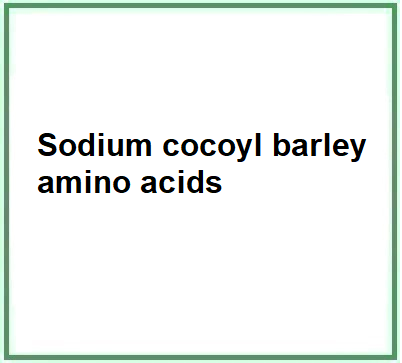Compendium of the most significant studies with reference to properties, intake, effects.
Beerling, J. (2013). Green formulations and ingredients. Sustainability: How the cosmetics industry is greening up, 197-215.
Abstract. This chapter highlights the synthetic ingredients generally felt to be undesirable in a natural or organic product. It also covers how truly natural some current products are versus what their marketing claims would lead consumers to believe. First, the chapter provides some generally accepted definitions of synthetic, natural, naturally derived, nature identical and organic. High consumer demand for natural and organic cosmetics is leading to a large number of cosmetic products making ‘natural’ and ‘organic’ claims. The chapter explains how true these claims are and also how consumers know which products are really natural cosmetics and how accurate are many of the organic marketing claims made today. The chapter discusses the green replacements for synthetic cosmetic ingredients. Virtually all areas of the cosmetic industry recognise the need to reduce reliance on petro-chemicals, as well as the need to meet the demands of the growing band of ‘green’ consumers.
Iwata, H., & Shimada, K. (2013). Practice of designing cosmetics formulations. In Formulas, Ingredients and Production of Cosmetics (pp. 113-217). Springer, Tokyo.
Abstract. This chapter describes the practice of designing cosmetics formulations and gives examples of actual formulations. Toilet soaps have long been manufactured by saponifying natural oils and fats with alkalis, such as sodium hydroxide. Today, they are mainly produced by neutralizing fatty acids. Shampoos mainly consist of anionic, amphoteric and cationic surfactants, thickeners, and bubble stabilizers. The properties and combinations of the ingredients determine the viscosity and the feel of use of the product and thus should be carefully investigated. Hair conditioners, rinses, treatments, and packs consist of similar constituents, but hair treatments and hair packs also contain proteins, amino acids, moisturizing ingredients, and/or other efficacious constituents in general to repair damage. Skin creams should be designed so as to achieve the aimed sensory characteristics, i.e., for making moisturizing or light cream. The sensory characteristics of creams are determined by the oily components, emulsifiers, polymers, glycols, product form, and viscosity. The sensory characteristics and viscosity can be estimated from the alkyl groups of the oily components and surfactants. Leave-on hair care cosmetics are applied directly on hair and are not rinsed off, and thus the sensory characteristics of the constituents are directly felt. It is thus important to have thorough knowledge of the sensory characteristics of the ingredients to be combined such as oils, glycerols, and polymers. Cosmetics mainly consisting of oils are produced by combining carbohydrates, vegetable and animal oils and fats, waxes, esters, higher alcohols and nonionic surfactants, and adding coloring agents, scenting agents, and efficacious ingredients. Facial toner should be formulated so as to moisturize, soften, firm up, brighten, and smoothen the skin and give a moisturized feeling.
Talakoub, L., Neuhaus, I. M., & Yu, S. S. (2016). Antiaging Cosmeceuticals. In International Textbook of Aesthetic Surgery (pp. 1183-1209). Springer, Berlin, Heidelberg.
Abstract. The Food, Drug, and Cosmetic Act defines drugs as products that cure, treat, mitigate or prevent disease, or affect the structure or function of the human body [1]. The dermatology and cosmetic industries recognize “cosmeceuticals” as cosmetics that have drug-like benefits. The term “cosmeceutical” was first used by Dr. Albert Kligman to describe a cosmetic product that exerts a therapeutic benefit in the appearance of the skin, but not necessarily a biologic effect on skin function, which would then classify it as a drug [2–4]. The Food and Drug Administration does not recognize or regulate cosmeceuticals. The symbiotic relationship between a drug and a cosmetic has become increasingly evident with the rapid growth of the cosmeceutical industry over the last decade. There are now both prescription cosmeceuticals and over-the-counter cosmeceuticals available to consumers. This arbitrary distinction varies in different countries. For example, drugs such as tretinoin, available only by prescription in the United States, are sold as over-the-counter cosmeceuticals in Central America. Antiperspirant is also regulated as a drug in the United States while being considered a cosmetic in Europe.
Małysa, A., & Kowalska, M. (2016). Rola skwalanu z oliwy z oliwek w kształtowaniu właściwości fizykochemicznych i użytkowych dwufazowych płynów do kąpieli. KOSMETOLOGII, 77.
Abstract. The aim of this study is to present plants from the Polish flora used in cosmetics. The species list was compiled based on own observations and literature data. The cosmetic plants were classified with regard to their life forms and application in cosmetics industry. Plants under legal protection are indicated. In the flora of Poland, 150 species with high bioactivity used in cosmetics and pharmaceutical industries have been identified. The active substances in these plants usually serve as components of creams, lotions, shampoos, and soaps. In this group of plants, perennials account for approximately 50%, trees and shrubs 31%, and annual plants 9%. The greater number of cosmetic plant species originate from meadow communities. In the group studied, 11 species receive legal protection in Poland and 24 species are included in various lists of international protection.
![]() Sodium cocoyl barley amino acids
Sodium cocoyl barley amino acids 


